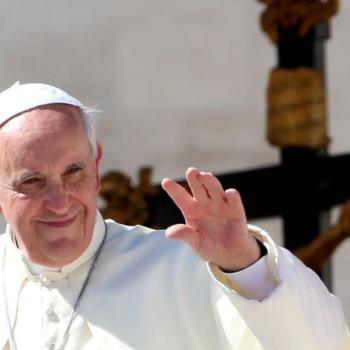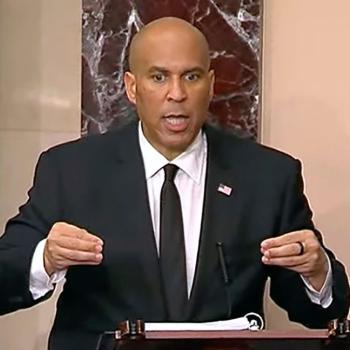The Transfiguration of Jesus asks us: what kind of church shall we be in the midst of a divisive society pulling us in so many directions? Using a ‘dialogical lens’ to read and interpret this text can offer insight.

Preaching the Transfiguration of Jesus with a Dialogical Lens
During the Sundays of Lent, I’ve been invited to First Presbyterian Church in Lexington, Kentucky, to lead a deliberative dialogue series on “The Role of the Church in a Divided Society.” In preparation for this series, I’ll be preaching on Transfiguration Sunday to frame the dialogue from a biblical and theological perspective. I’ll be preaching what I call a “Prophetic Invitation to Dialogue” sermon which is part of the sermon-dialogue-sermon process I developed in my book Preaching in the Purple Zone: Ministry in the Red-Blue Divide (Rowman & Littlefield, 2019). This sermon will set the stage for the dialogue and invite folks to participate in the forums throughout the season of Lent.
In my book, I suggest using a “dialogical lens” for reading and interpreting scripture, and I’ll be doing that for the Transfiguration text.
This lens helps us to see that the Bible not only shows us examples of dialogue and discernment, but also authorizes the church to engage challenging issues and conversations as well. Let’s see how we might approach the reading in Matthew 17:1-9 using a “dialogical lens.” [You can read the full description of the 6 Steps for Using a Dialogical Lens here.] As a quick review, here are the 6 steps:
Six Steps for Using the Dialogical Lens

- Point out the dialogical aspects of the passage.
- Determine what’s at stake.
- Identify the values.
- Explain how God, Jesus, and/or the Holy Spirit is active.
- Recognize what the dialogue is teaching us.
- Suggest possible next steps.
Here’s an outline for applying the dialogical lens to Matthew 17:1-9, the Transfiguration of Jesus.
Point out the dialogical aspects of the passage.
There are five “characters” in this story: Jesus, Peter, James, John, Moses, Elijah, voice of God. Note that Moses and Elijah speak with Jesus, but not with the disciples. The disciples speak with Jesus but do not address the prophets. God speaks to all of them.
Other implicit participants in this exchange are Matthew as the author of the text and his original readers/listeners. This means we’ll need to do some historical-critical exegesis to get the fuller scope of this passage.
Also, those in the congregation on that Sunday will be participating in this dialogue both vicariously as they listen and indirectly as they attend to the preacher’s sermon (who is also part of the dialogue). And some of them will participate in actual dialogue during the forum series. Thus, the text has its own internal dialogue, speaks to Matthew’s community, speaks to this congregation in the worship service, and will undergird the deliberative dialogue to come.
Determine what is at stake.
The previous chapter was Jesus chastising Peter for not setting his mind on “divine things” (16:21-24). At the Transfiguration, Peter’s mind is definitely set on divine things! Yet he still does not understand. Peter wants to create three tabernacles – foolishly trying to house the holy. What’s at stake here is the identity of Jesus, his relationship with his disciples, what they will face when they come down off the mountain, and what all of this means for us at the church today.
Identify the values.
All the characters in this text value that which is holy, sanctified, set apart. They all honor and venerate the prophets. They all honor and venerate Jesus. This is a formative experience for the three disciples. The transfiguration is the lens through which they will observe and participate in the rest of Jesus’s ministry and teaching, his arrest, trial, crucifixion and resurrection. But there is still incongruence between what Jesus wants for them and from them and what they want (tabernacles v. living in the world as Jesus calls them to live [see Matt. 16:24-27])
Explain how God, Jesus, and/or the Holy Spirit is active.
Pay attention to the verbs in this passage. Jesus “took” and “led” the disciples. Later Jesus “touches” them, tells them to get up and not be afraid. This will become a key point in the sermon.
What else does Jesus do? He confers with the prophets. He is “transfigured.” And he instructs the disciples to keep silent about what they see until after the resurrection.
The other important thing to note is that God speaks to all of them about who Jesus is (my Son, the Beloved) and what they are to do in response (listen to him). This will have important ramifications for the deliberative dialogue process.
Recognize what the dialogue is teaching us.
One of the things I’ll be lifting up in this sermon is that being the church means being with people who have different values, different perspectives, even misdirected commitments (like the disciples on the mount of transfiguration). But notice – Jesus does not kick them off the mountain when they get it wrong. Even when we are afraid as we enter into highly-charged holy moments (as many dialogues can be), we can trust Jesus’s presence among us, assuring us not to fear.
The primary question I will want us to ponder is this. How do we hear the voice of God calling us to “listen to Jesus” in the midst of our dialogues, our sacred exchanges, our holy discussions?
Suggest possible next steps.
We have an opportunity to enter into “holy dialogue” during Lent, especially as First Presbyterian undertakes the Adult Forum series, “The Church’s Role in a Divided Society.” What kind of church shall we be, knowing what this passage models for us. And knowing what challenges our community is facing (election year, politically divisive time)? Above all, we must listen for God’s voice above the tumult telling us to “listen to Jesus.”
[Want to see the sermon that resulted from this? Click here: Love Touches Fear: Transfiguration Sunday.]
Read also:
Using a ‘Dialogical Lens’ for Scripture and Preaching
Breach-Repairers: Preaching Isaiah 58 Using a Dialogical Lens
A Fiery, Divisive Jesus? Luke 12:49-56 Through a Dialogical Lens
Applying the Dialogical Lens to the Parable of the Rich Fool

Leah D. Schade is the Assistant Professor of Preaching and Worship at Lexington Theological Seminary in Kentucky and ordained in the ELCA. Dr. Schade does not speak for LTS or the ELCA; her opinions are her own.. She is the author of Preaching in the Purple Zone: Ministry in the Red-Blue Divide (Rowman & Littlefield, 2019), Rooted and Rising: Voices of Courage in a Time of Climate Crisis (Rowman & Littlefield, 2019), and Creation-Crisis Preaching: Ecology, Theology, and the Pulpit (Chalice Press, 2015).
Leah’s latest book is a Lenten devotional centered on Creation: For the Beauty of the Earth (Chalice Press, 2020).
Twitter: @LeahSchade
Facebook: https://www.facebook.com/LeahDSchade/













